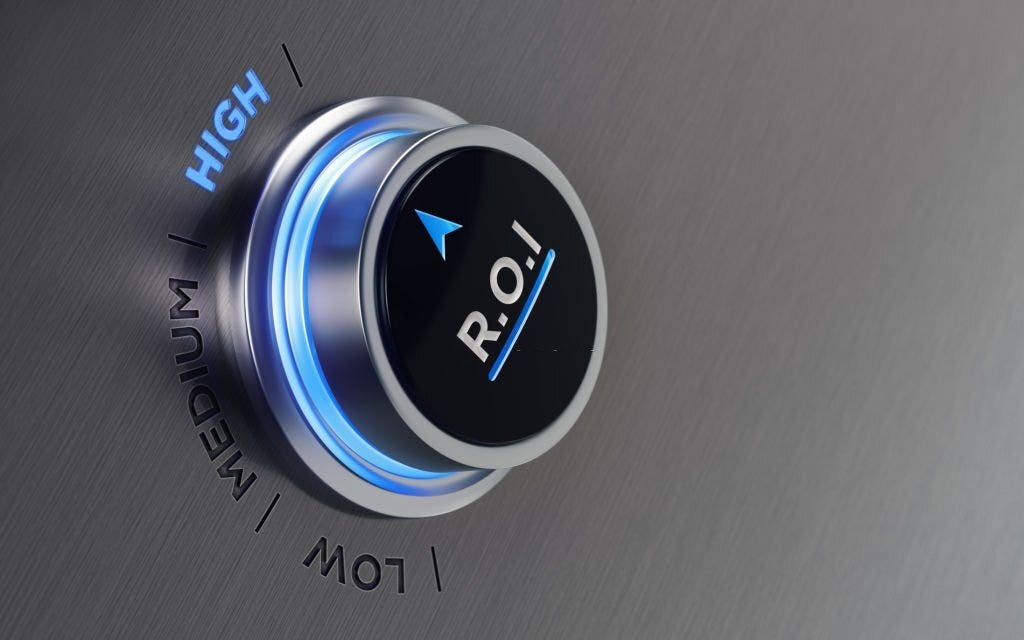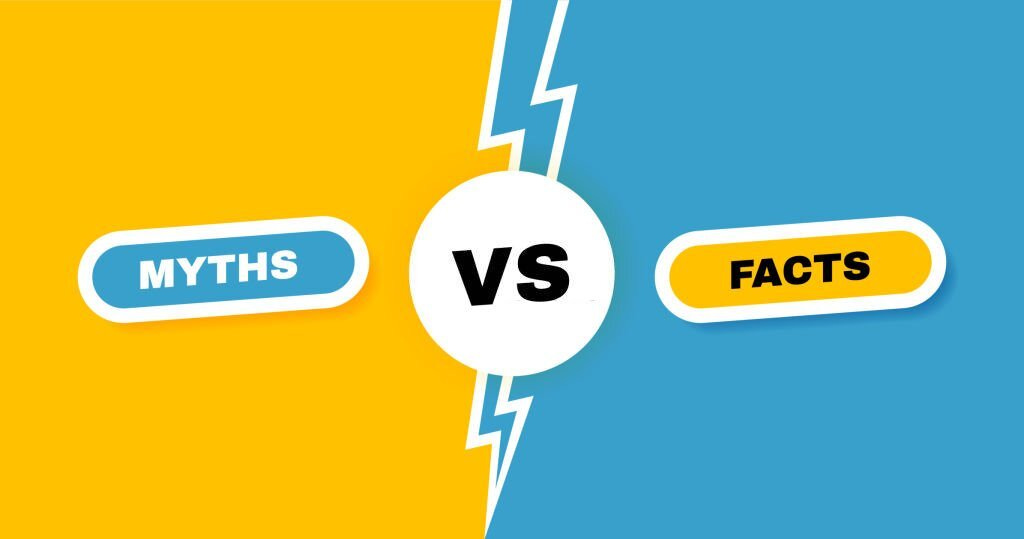13 Sales Objections You Can Overcome Easily Through Content
Learn how to uncover, affirm, and overcome objections to buying your solution.
Selling is not simply promoting a product and hoping people buy it.
Sales requires understanding the conversations your customers are having in their heads — and meeting them where they are.
To stay in business, you need to uncover, affirm, and overcome people’s objections to buying your product or service.
We can sort sales objections into 13 categories:
ROI
Pace
Need
Myths
Terms
Money
Timing
Options
Change
Distrust
Features
Authority
Resources
Trying to overcome each objection individually would take too much time. If you had to do that for dozens of clients, you’d quickly get tired.
Content works for you 24/7 across all channels, allowing you to answer customer questions at scale without repeatedly explaining yourself.
For the purposes of this guide, I’ll assume you’re selling a useful product to a relevant audience.
I’ll briefly explain each sales objection and share content examples you can use to address it.
Let’s dive in.
#1 ROI
“I’m not sure how your product will improve our business”
“I don’t see the ROI here”
As a business owner, you’re not selling a product — you’re selling improvement.
Copywriters don’t sell words, they sell more leads
Trainers don’t sell exercise, they sell better health
DJs don’t sell music, they sell more tickets
Your customers want to know how buying your solution will lead to more revenue or longevity for them.
The best way to show this is through case studies. Talk about how you’ve helped previous clients improve their lives and businesses.
Content examples:
“Did you know A/B testing your website copy can triple your conversion rates? Here’s how we helped First National Bank convert more loan clients through their website: [case study link]”
“Three months of regular HIIT sessions can help you drop 20 pounds. With summer around the corner, now’s the best time to invest in reaching your body goals.”
#2 Pace
“I need to learn more before I buy”
“I just want a quote for now”
“I’m just browsing”
Customers buy at their own pace, not yours. Sometimes your prospect isn’t ready to buy, and being pushy can be counterproductive.
Instead, give them all the information they need to make an informed decision.
You can craft and share:
Detailed quotes
Landing pages
Video demos
Testimonials
Case studies
Reports
Guides
Content examples:
“Remodeling your home is a huge endeavor. Planning in advance makes the whole process easier. Read our blog post on how to plan your next home redecoration: <link>”
“What goes into a car repair quotation? We break down exactly what you pay for in our next newsletter — subscribe now to get it when it lands: [link]”
#3 Need
“Our current tool already delivers results”
“I’m satisfied with what I have”
“I don’t see the need for this”
“This isn’t a current priority”
Sometimes you’re up against inertia — the tendency of things (and situations) to remain as they are.
Inertia is powerful, but there are three ways to break through it:
Create discontent
Create FOMO
Sell change
Brands create discontent all the time. You could be happy with your iPhone [x] until Apple releases the iPhone [x+1]. Suddenly you feel pressure to upgrade.
It’s also easy to generate FOMO. Everyone now wants Bitcoin for fear of missing out on profits. The infamous Fyre Festival was largely driven by FOMO (and lies).
Lastly, the only constant in life is change — and people hate change.
By positioning your product or service as the thing that’ll help them navigate that change, you increase your chances of making a sale.
Zoom made a killing helping companies navigate remote work. McKinsey makes billions each year helping companies and governments navigate change.
Use all three triggers in your content.
Content examples:
“Introducing the all-new Widget: bigger, stronger, and more powerful than ever. Here’s how Widget 2.0 wins over our previous product: [changelog]”
“Don’t miss out on the conference of the year! We’ll be hosting Cee Iyo, B. Leonaire, and other thought leaders this week. Here’s a sneak peek of their upcoming talks: [list]”
#4 Myths
“I heard [untrue statement] about…”
“Is it true that…”
Misinformation is rife in any industry. For example, lots of people still think that:
Weed is dangerous
Website design is cheap
Teaching isn’t profitable
Dating apps are pointless
English degrees are useless
You need to dispel the myths in your niche with hard evidence.
Content examples:
“Teachers are widely underpaid — but did you know there’s a subset of teachers who make over $$$ a year? Here are 6 ways your teaching degree can make you more money: [thread]”
“Is cannabis dangerous? We dug into over 37 studies over the last 3 years for answers — and here’s what science says: [thread]”
“Most English majors earn a median salary of $ per year, but most of them are sleeping on gold. Here are 18 lucrative niches where your English degree can make you rich: [thread]”
#5 Terms
“I don’t want a long contract”
“I want to preserve flexibility”
If your product or service is contract-based, people might balk at the idea of committing to you long-term.
They might also object to the typical terms and conditions that come with such a contract.
Delete these objections by offering shorter, more flexible terms in the beginning.
Content examples:
“Skip the annual contract and sign up at our gym with a month-to-month commitment. Cancel any time. Apply today: [link]”
“Got a day job? Keep it and make money on the side consulting for global clients on product packaging. See who else we work with on our platform: [link]”
#6 Money
“We don’t pay suppliers 100% upfront”
“We’ve already allocated our budget”
“Your product is too expensive”
“There’s no budget for this”
“I can get this for cheaper”
Money lies at the heart of most sales objections. Interest can quickly evaporate once customers learn your price.
You can counter money-based objections in a few ways:
Justify your pricing — why do you charge that much? Highlight your processes, staff, expertise, convenience, security, and certifications through content — especially if you sell to high-end clients.
Prove ROI — how will this purchase help the customer? Talk up past customers and the results you’ve achieved for them. Create and link to solid case studies.
Sweeten the deal — what can you add or remove from the offer to make your price more palatable? Offer flexible payment plans or time-limited promotions.
Help them budget for it — how does your customer plan for such purchases? Anticipate their timelines and include your product or service in their budget.
Downplay cheaper alternatives — why should customers avoid paying for a cheaper version? Highlight the disadvantages of going that route.
Content examples:
“Wedding photography is an investment in lifetime memories. You may be tempted to hire a cheaper photographer for your big day, but here’s why that almost always backfires: [thread]”
“Counselling can improve marital happiness by [x]% within 6 months. Some medical aid funds cover counseling, including: [list]”
“Heat up your house this winter and pay off your heating installation over 6 months. See if you qualify: [link]”
Whatever you do, don’t show fear or shame when posting your prices online.
You’re helping people solve a pressing problem, and you deserve to be paid for your efforts.
#7 Timing
“I’m too busy for this right now”
Maybe next month/quarter/year”
Timing objections pit you against other priorities.
Your job is to show that what you sell either:
Speeds things up
Lightens their load
Saves them future pain
Content examples:
“A busy schedule makes it hard to exercise regularly. Working out for 30 minutes every morning can clear your head and make you more productive. Here are 5 ways to get in shape at home: [thread]”
“December is here, and everyone’s busy with holiday plans — but Januworry is just around the corner. Good budgeting today keeps your fridge full tomorrow. Here’s how to plan your December budget through our app: [thread]”
#8 Options
“We’re considering Competitor X”
“We’re still looking at other options”
Your business doesn’t operate in a vacuum.
Your prospects are always comparing you to another competitor or alternative solution.
There’s a subtle difference between those two phrases.
If you sell fast food, your competitors are McDonald’s and KFC.
But you’re also competing against chocolate bars at the grocery store — alternative solutions to hunger.
You’re also competing against that chef who sells healthy meal preps on social media.
To get ahead, you’ll need to highlight why you’re a better option than every other solution out there.
Content examples:
“Looking to lose weight? Slimming teas and waistbands might seem like cheaper, faster alternatives, but here’s why they’re ineffective: [thread]”
“Planning your next event in Sandton? Here are the 10 best event planners to use and how they stack up against each other: [link]”
#9 Change
“We’re acquiring/merging with another company”
“We’re revamping our systems at the moment”
“There’s a hiring freeze right now”
Your customers’ lives and businesses aren’t static.
There’s always stuff happening behind the scenes you may not be aware of.
With enough research, you can uncover the changes happening and slot your offering into the new paradigm.
Content examples:
“As you ramp up hiring, your internal processes can quickly get chaotic. Learn how Jobbio eases the screening and interview processes in our latest blog post: [link]”
“Switching companies? Here are 5 things to keep in mind — plus 3 ways career coaching can ease your transition: [list]”
#10 Distrust
“You don’t understand my situation”
“I’ve heard too many complaints”
“I’ve never heard of you before”
“I don’t trust such products”
“This is just a fad”
People are more hesitant to spend money on a new company with an unproven track record.
They’re also less likely to do business with you if you have a negative reputation or don’t understand their context.
If you’re new to the market, your best bet is to:
Offer a better product, service, or experience
Understand the customer more deeply
Price your offering more competitively
Bring your prospects into the future
If you have a negative reputation, fix your reputation issues first before touting your brand through content — else you’ll bleed credibility.
If customers don’t trust your solution, highlight why it works and the results it has gotten for other people.
If your product is a fad, please throw away those fidget spinners and find something better to sell.
Content examples:
“As a new agency, we’ve spent a lot of time reimagining what social media marketing could look like. Here are 6 ways small businesses can benefit from social media: [thread]”
“You spoke, and we listened. Your feedback is valuable to us, and we’ve made the following changes to our business as a result: [list]”
“We’re new to the market, but our team is deeply experienced in the field. With over 10 years of corporate experience each, meet your new leadership advisory team: [carousel]”
#11 Features
“This key feature is missing from your product/service”
“I’m not sure I need that feature/add-on”
Your prospects are always appraising and comparing your solution to others in the market.
If you’re planning to add new features or services, tease that in your content.
Highlight the role of each feature or add-on and what benefits they bring.
If you deliberately don’t offer certain features or add-ons, explain why their absence makes your product better.
Content examples:
Our most requested feature is now underway! We’ll be releasing the Magic Genie feature for all our kettle 🫖 products next month — stay tuned for more updates.”
“Lots of clients have asked why we don’t do paid ads on top of organic content creation. There are three reasons for this: [thread]”
“Is cellphone insurance an unnecessary expense? Quite the opposite. Here are 3 ways it protects your purchase: [list]”
#12 Authority
“I need to speak to my boss/spouse/business partner first”
“I don’t have the authority to buy”
“I don’t control the budget”
Complex products and services are usually bought by committees.
Examples include cars, houses, and enterprise software.
Your job is to give prospects the tools, words, and data to convince their buying committees you’re the best option.
Content examples:
Safety is important when choosing your next car. Here are 6 ways the Folfo XC70 protects your family while driving: [list]”
Customer service training is important, but how do you build a successful business case internally? Here’s the latest data on how better customer service impacts revenue: [link]”
#13 Resources
“We don’t have the capacity to implement that right now”
“I’m not sure I can afford the maintenance”
Prospects might want your solution but lack the means to implement it themselves.
For example, you might offer content coaching services for busy founders, but some of your clients might lack the time to write the content themselves.
Your options here are to:
Implement the service yourself (e.g., by offering content writing services)
Recommend other tools or service providers (e.g., using copy.ai to generate content)
Content examples:
“A pool needs regular maintenance. If you’re thinking of installing a pool at your place, here are 6 pool cleaning tools you’ll need: [thread]”
“In addition to leadership training, we also offer executive recruitment services. Learn how we source the right leaders for your business: [link]”
Overcome sales objections through content
At the heart of every sales objection is a lack of urgency.
People spend money on what they feel they need ASAP.
Your job is to understand where the customer’s priorities lie and meet them halfway, then steer them toward your solution.
Content marketing is a fantastic way to overcome sales objections at scale.
Best of all, your content works for you 24/7 — so you don’t have to make calls or send emails all day.
Infuse the above tips into your content strategy and enjoy better results.

















